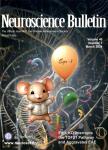Inflammatory Changes in Paravertebral Sympathetic Ganglia in Two Rat Pain Models
Inflammatory Changes in Paravertebral Sympathetic Ganglia in Two Rat Pain Models作者机构:Department of Anesthesiology University of Cincinnati College of Medicine Cincinnati OH 45267 USA Department of Psychological and Brain Science Indiana University Bloomington 702 N Walnut Grove Ave. Bloomington IN 47405 USA
出 版 物:《Neuroscience Bulletin》 (神经科学通报(英文版))
年 卷 期:2018年第34卷第1期
页 面:85-97页
核心收录:
学科分类:1006[医学-中西医结合] 1002[医学-临床医学] 100602[医学-中西医结合临床] 10[医学]
基 金:supported in part by National Institutes of Health Grants NS045594 NS055860 and AR068989 to J.M.Z
主 题:Neuropathic pain Sympathetic Macrophage T cell Satellite glia Inflammation Hyperexcitability
摘 要:Injury to peripheral nerves can lead to neuropathic pain, along with well-studied effects on sensory neurons, including hyperexcitability, abnormal spontaneous activity, and neuroinflammation in the sensory ganglia. Neuropathic pain can be enhanced by sympathetic activity. Peripheral nerve injury may also damage sympathetic axons or expose them to an inflammatory environment. In this study, we examined the lumbar sympathetic ganglion responses to two rat pain models: ligation of the L5 spinal nerve, and local inflammation of the L5 dorsal root ganglion (DRG), which does not involve axotomy. Both models resulted in neuroinflammatory changes in the sympathetic ganglia, as indicated by macrophage responses, satellite glia activation, and increased numbers of T cells, along with very modest increases in sympathetic neuron excitability (but not spontaneous activity) measured in ex vivo recordings. The spinal nerve ligation model generally caused larger responses than DRG inflammation. Plasticity of the sympathetic system should be recognized in studies of sympathetic effects on pain.



